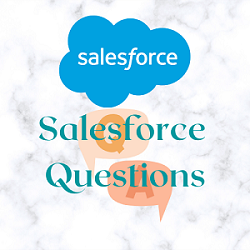The order of execution of triggers in Salesforce follows a specific sequence. Here's a general overview of the order of execution:
Before Triggers:
a. System Validation Rules: Salesforce verifies the record's validity, such as required fields, field formats, and maximum field lengths.
b. Custom Validation Rules: Any custom validation rules defined by the developer are executed.
After Triggers:
a. Assignment Rules: If the object has assignment rules defined, they are processed.
b. Auto-Response Rules: For objects with auto-response rules, they are executed.
c. Workflow Rules: Workflow rules are evaluated, and actions defined within them are performed.
d. Processes: Processes (built using Process Builder) are evaluated and executed.
e. Escalation Rules: If escalation rules are defined for the object, they are processed.
f. Entitlement Rules: For objects with entitlement rules, they are executed.
DML Operations:
a. Data Manipulation Language (DML) operations like insert, update, delete, or undelete are performed.
b. Before Triggers: Any triggers on the related parent objects are executed.
c. Validation Rules: Both system and custom validation rules are re-evaluated.
d. Duplicate Rules: If duplicate rules are enabled for the object, they are checked.
e. Record Save: The record is saved to the database, but it's not yet committed.
After Triggers:
a. Email Services: Any email services triggered by the record are executed.
b. Post-Commit Logic: Any operations that need to be performed after the record is committed are executed, such as sending outbound messages, updating external systems, or performing asynchronous operations.
It's important to note that not all steps are applicable in every scenario, as it depends on the specific configuration and features used in your Salesforce org. Understanding the order of execution helps in designing effective and efficient triggers while considering potential dependencies and interactions with other processes in Salesforce.


0 Comments
Post a Comment